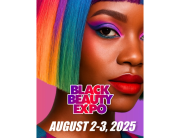Foundation is a liquid, cream, or powder makeup applied to the face and neck to create an even, uniform color to the complexion.
Coverage refers to the opacity of the makeup, or how much it will conceal on the skin.
- Sheeris the most transparent and contains the least amount of pigment. It will not hide discolorations on the skin but it can minimize the contrast between the discoloration and the rest of the skin tone. Although pigment technology has evolved dramatically since 2004, the traditional protocol for sheer foundations called for the pigment to comprise 8–13% of the finished formula.
- Lightcan cover unevenness and slight blotchiness but is not opaque enough to cover freckles. It contains 13–18% pigment.
- Mediumcoverage can when set with a tinted (instead of translucent) powder, cover freckles, discolorations, blotchiness, and red marks left by pimples. It contains 18–23% pigment.
- Fullcoverage is very opaque and used to cover birthmarks, vitiligo, hyperpigmentation, and scars. It is sometimes referred to as “corrective” or “camouflage” make-up. In general, it contains up to 35% pigment, though professional brands, designed for use on stage, can contain up to 50% pigment.
There are various tools that can be used to apply foundation including your fingers, a sponge, and several varieties of foundation brushes, each providing a different finish.
- Fingers: Using one’s fingers can be useful for creating a natural look. The natural body heat given off by fingers helps the foundation to melt into the skin and makes it easy to blend in a sheer layer of makeup. However, using fingers isn’t recommended for applying full coverage foundation as it will create a streaky and uneven appearance.
- Sponge: Using a sponge to apply foundation is best for creating a look with sheer to medium coverage. A triangular sponge is good for blending in liquid foundation and concealer, whilst a rounded sponge is best for powder foundations, though either can be used for these purposes. To use, wet a clean sponge with water first. The moisture will prevent the sponge from absorbing the makeup and will help to more evenly distribute the product over the skin- but make sure to squeeze out excess water. Sponges with pointed tips are best utilized for a seamless blending of the under-eye area and wide, round sponges are best for blending foundation over large flat areas of skin like the cheeks or forehead.
- Brush: For liquid foundation, a brush with a synthetic bristle is recommended as the brush won’t soak up too much of the liquid. Alternatively, a natural bristle which is more porous works best for powder foundations and other powder face products. A densely bristled brush is best for applying foundation as it is less likely to leave streaky brush marks. As with all tools used to apply makeup to the face, brushes should be soft and gentle.






Add Comment
You must be logged in to post a comment.